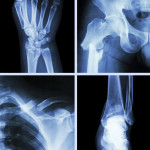Treating HIV with just two drugs, ViiV Healthcare’s Tivicay (dolutegravir) and Janssen’s Edurant (rilpivirine), suppresses the virus as effectively as taking a standard three- or four-drug antiretroviral (ARV) regimen.
In December 2016, ViiV announced this top-line finding from the 48-week point of the ongoing Phase III SWORD-1 and -2 trials. The two identical open-label, multicenter non-inferiority studies, which will continue for 148 weeks, are testing the efficacy and safety of switching from a stable three- or four-ARV regimen to Tivicay and Edurant or remaining on the original regimen. All 1,024 HIV-positive participants initially had an undetectable viral load for at least 12 months, and none had any history of virologic failure.
Josep M. Llibre, MD, of the University Hospital Germans in Barcelona, presented more specific details about the studies’ results at the 2017 Conference on Retroviruses and Opportunistic Infections (CROI) in Seattle. The presentation included the finding that the safety outcomes of the Tivicay and Edurant regimen were poorer than those of the three- and four-drug regimens—a finding that is common in trials involving switching from a stable ARV regimen to a new one.

Josep M Llibre of the University Hospital Germans Trias at CROI 2017 in SeattleCourtesy of Benjamin Ryan
In an interview with POZ, Kimberly Smith, MD, MPH, head of global research and medical strategy for ViiV, said, “What we tend to see in switch studies, in particular open-label switch studies, is that individuals that start on something new, any symptom that they have, they’re more likely to report it because they’re particularly sensitized.”
Between the two studies, participants, who had been on ARVs for a median of just over four years, were randomized such that 513 of them switched to the two-drug regimen and 511 stayed on their original regimen. The original treatments were integrase inhibitor–, non-nucleoside reverse transcriptase inhibitor (NNRTI)– or protease inhibitor–based regimens.
After 48 weeks of treatment, in the two-drug and original-regimen arms, a respective 486 (95 percent) and 487 (95 percent) had an undetectable viral load. Consequently, the researchers judged that the two-drug regimen was non-inferior to the three- and four-drug regimens, which essentially means the efficacy of each form of treatment is comparable.
A respective 486 and 487 participants in each study arm have completed 52 weeks of follow-up.
Three people in the two-drug arm (less than 1 percent) experienced virologic failure, compared with six people in the original-regimen arm (1 percent). A respective 27 (5 percent) and 21 (4 percent) experienced serious adverse health events, a difference that was not statistically significant, meaning it could have occurred by chance.
In the two-drug and original-regimen arms, by week 52, a respective 21 (4 percent) and 3 (less than 1 percent) experienced adverse health events that led them to withdraw from the study. A respective eight (2 percent) and one (less than 1 percent) experienced grade 3 or 4 adverse health events.
The most common side effects, reported by more than 5 percent of participants taking the two-drug regimen, were symptoms of the common cold, headache, diarrhea and upper respiratory tract infection. The most commonly reported side effects among those who remained on the three- or four-drug regimens were common-cold symptoms, upper respiratory tract infection, back pain, headache and diarrhea.
Indicators of bone health were more favorable—and statistically significantly so—among those who switched to the two-drug regimen compared with those who did not switch. Of note, approximately 70 percent of those on the three- and four-drug regimens at the study’s outset were taking Viread (tenofovir disoproxil fumarate), which is associated with bone toxicities.
In the future, ViiV researchers will do a subanalysis of those who started the trial taking Viread. According to Smith, this should reveal greater differences in bone safety markers between those who remained on the drug and those who switched to Tivicay and Edurant.
Switching regimens had a neutral effect on cholesterol and was associated with a small decline in triglycerides that was not statistically significant.
One participant who experienced virologic failure while taking Tivicay and Edurant had a non-nucleoside reverse transcriptase inhibitor (NNRTI) resistance-associated mutation, known as K101K/E. No integrase inhibitor resistance-associated mutations emerged in those taking this regimen.
The researchers concluded that the safety profiles for both Tivicay and Edurant were consistent with their respective drug labels.
ViiV intends to file for U.S. Food and Drug Administration (FDA) approval of the two-drug regimen as a fixed-dose combination tablet during the first half of 2017.
According to Smith, ViiV was inspired to pursue Tivicay as the basis of a two-drug regimen because it is well tolerated and has a high barrier to resistance and superlative potency. In an early 10-day trial giving just Tivicay to HIV-positive study participants, the integrase inhibitor lowered their viral load by two and a half factors of 10 (known as 2.5 logs). No ARV had ever performed so well in such a trial. The company was also encouraged by the results of the LATTE trial of a two-drug regimen of ViiV’s investigational integrase inhibitor cabotegravir and Janssen’s non-nucleoside reverse transcriptase inhibitor (NNRTI, or non-nuke) Edurant (rilpivirine). (Data from the 144-week mark of LATTE was also presented at CROI.)
“The field has been using three drugs, four drugs forever,” Smith said. “So we think that it’s innovative to try to see if we can have people do well with less drugs.”







Comments
Comments